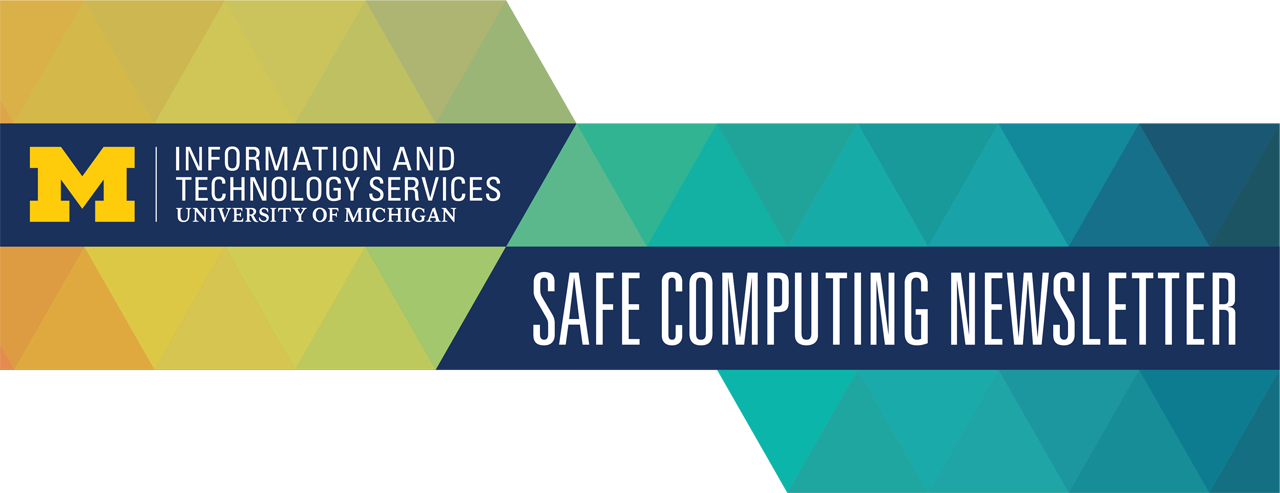5 Information Security Trends That Will Dominate 2015, CIO, 12/10/14
This CIO article identifies five IT security trends for 2015 that information security professionals should understand. These are not new trends, but, according to the article, "What is new is the increase in complexity and sophistication."
1. Cybercrime. Cybercriminals are collaborating and exhibiting greater technical competency. According to the article, "organizations must be prepared for the unpredictable so they have the resilience to withstand unforeseen, high impact events."
IIA works hard to mitigate cybercrime. The new Intrusion Prevention System (see article above), along with the Security Essential service in MiWorkspace units, other IIA services, and the work that all of you contribute help to make the university more resilient to attack.
2. Privacy and Regulation. Many governments, including that of the United States, have created or are in the process of creating new regulations around data privacy. Organizations need to have resources in place to respond.
U-M has a coherent body of information technology policies, but many of them have not kept up with the changing times. Forward-looking revisions to a number of those policies have been proposed, with comments from you and the entire U-M community due at the end of February. IIA will continue to monitor emerging developments in privacy and related regulations.
3. Threats from Third-Party Providers. According to the article, "Over the next year, third-party providers will continue to come under pressure from targeted attacks and are unlikely to be able to provide assurance of data confidentiality, integrity and/or availability."
As more U-M services are contracted from third-party vendors, IIA is working hard to ensure that measures are in place to protect the privacy and security of U-M data. IIA developed the U-M Service Provider Security-Compliance Questionnaire to aid Procurement and IT staff in assessing the security of a third-party vendor that could provide a U-M contracted-for service. The Sensitive Data Guide helps individuals determine which third-party storage solutions can safely be used for sensitive university data.
4. BYOx Trends in the Workplace. The Bring-Your-Own trend is here to stay, with people bringing their own devices, accounts, and online identities into the workplace and expecting to use them at and for work. Policies and guidelines are needed to address the increased exploitation risk.
Your recent work to complete unit implementation of Security of Personally Owned Devices That Access or Maintain Sensitive Institutional Data (SPG 601.33) is a key factor in U-M's response to this trend. In ongoing support of the policy, brochures with device security tips are available to units, and detailed instructions for securing most devices are available on the Safe Computing website.
5. Engagement With Your People. People are our greatest asset, but also our most vulnerable target. According to the article, "Instead of simply making people aware of their information security responsibilities and how they should respond, the answer for businesses of all sizes is to embed positive information security behaviors that will result in 'stop and think' behavior becoming a habit and part of an organization's information security culture."
We are continually working to improve the education and awareness materials we provide, adding video, step-by-step instructions, and tutorials to the Safe Computing website, but there is more we can do. We have developed an education and awareness program focused on three key areas (anti-phishing, compliance, and Bring Your Own Device) with a number of supporting key messages. We are exploring the use of purchased data protection training. Watch for more information in the coming months. If you have ideas for better engaging the U-M community to foster safe IT practices, please send them to [email protected].

